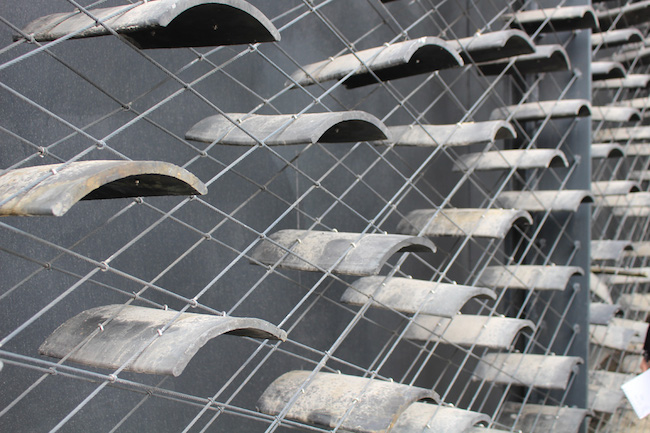Judging by how frequently we write about him, Kengo Kuma is one of our favorite architects. The Japanese builder is known for works like the Xinjing Zhi Museum, but we love him for his artistic/architectural interventions such as the Casalgrande Ceramic Cloud in Italy.
As with the Cloud, Kengo Kuma used tile to bring a visual-narrative idea to the fore with his design for the Folk Art Museum in Hangzhou, China. The project was funded by the China Academy of Art.

A cliché one encounters frequently in architectural writing is the hoary line, “the building is in harmony with its surroundings.” It usually means nothing more substantial than the building isn’t offensive to its location; it’s not brutalist architecture in the middle of suburbia or constructed entirely of asbestos or constantly on fire or what have you. Kengo Kuma instead approaches harmony with some thoughtfulness. The firm states:
The structures were designed with cross-sections that blend in with the mountain slope to instead of grading it, with the respective display spaces seamlessly being revealed as you go through the museum.
Roof tiles used to cover old homes in the area were gathered, and these and various other locally available materials with rich textures such as cedar were used inside. The group of small roofs that were made using these tiles give the museum the appearance of a village.
The tile works as an elegant metaphor for the nature of the museum. Folk art is a communal artistic expression, it emerges from a collective. What better way to picture it than as a village?
Bill Rodgers is the General Editor of cfile.
Love contemporary ceramic art + design? Let us know in the comments.









Add your valued opinion to this post.